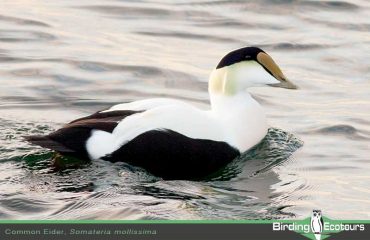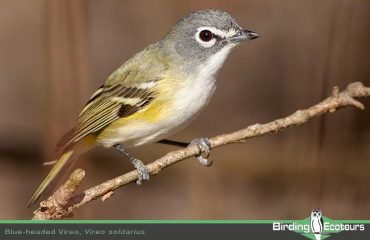New York – Montauk Point – Spring
-
Reviews 0 Reviews0/5
-
Vacation Style Holiday Type
-
Beach
-
Binoculars
-
Hiking
-
-
Activity Level Challenging
-
Group Size Medium Group
The South Shore of Long Island, from Jamaica Bay to Montauk Point, is rich in bird life and scenic habitat. Lots of scanning and scoping at Montauk Point and other coastal areas may produce scoters, Northern Gannets, and Common and Red-throated Loons, plus give us excellent opportunities for additional seabirds.
There may be a few unusual gulls and terns in the area. Shorebirds will be present in good numbers. There is a possibility of finding either a Ruff or Curlew Sandpiper, and hopefully Piping Plovers. Migrant and breeding songbirds will be common in the woodlands, hedgerows, and marshes. On our way to and from Montauk we will visit many additional locations such as Jamaica Bay, Shinnecock Inlet, Point Lookout, Jones Beach, and Sagaponack Pond.
Here we may add some lingering ducks, the elusive marshland sparrows, and Clapper Rail. Our first and last nights are on the west end of the island, near Jamaica Bay. We stay in Montauk for three nights, with great dinners at the Shagwong and O’Murphy’s Pub.
We will take a maximum of eight participants. On rare occasions we may extend the maximum to ten participants.
Duration: 6 days
Limit: 4 – 8
Date: We only run this trip by special request currently
Start: Queens, NY
End: Queens, NY
Price:
US$2974 per person sharing assuming 4 – 8 participants
Single supplement: US$520
We can run the same trip at a price similar to the larger group price for 2 tour participants, if they rent their own vehicle and pay for fuel – please e-mail [email protected] for details.
- Meals
- Accommodation
- Guiding fees
- Entrance fees
- All transport while on tour
- Tolls
- Domestic and International flights
- Items of a personal nature, e.g. gifts
- Alcoholic drinks
- Personal insurance
- Laundry Service
- Gratuities
MONTAUK POINT, SOUTH SHORE OF LONG ISLAND, NEW YORK
2-6 May 2013
Top 10 lists are voted upon by the participants at the completion of each tour.
1 – ICELAND GULL – this bird was a big surprise, as it was so late in the season. It was a sub-adult, probably 1st-summer, at the mouth of Montauk Harbor. Ellie first saw it in flight, then we found it perched on a gravel bar.
2 – Common Eider – there was a single, sub-adult drake at Montauk Point, and three sub-adult drakes at Shinnecock Inlet.
3 – Piping Plover – we found this federally threatened shorebird at several locations, but it was especially numerous at the Jones Beach Coast Guard Station. Great looks.
4 – Red-throated Loon – found in small numbers almost everywhere that we scanned the ocean.
5 – Killdeer with babies – both parents with four newly hatched young at Jones Beach, west end. Adorable!
6 – Black-legged Kittiwake – distant view of an adult feeding with other gulls and terns at Montauk Point.
7 – Black-and-white Warbler – seen well and in good numbers in the Camp Hero woodlands.
8 – Glossy Ibis – excellent looks at several adults at Napeague Harbor.
9 – White-crowned Sparrow – a single adult was feeding on the shoulder of the road at Jones Beach.
10 – Yellow-crowned Night-Heron – Rick found an adult at Jamaica Bay Wildlife Refuge. We all had scope views.
11 – Horned Lark – on two different visits we saw a single adult at the Jones Beach Coast Guard Station. It was probably nesting.
12 – Greater Yellowlegs – fine looks at several individuals in full breeding plumage.
Interesting mammals included a Harbor Seal at Montauk Point, and a Gray Fox carrying an Eastern Gray Squirrel near our motel in Montauk. Our two reptiles were an Eastern Garter Snake and a Common Snapping Turtle.
-
Will we do any birding the first day?
-
How should I dress for the tour?
-
Besides clothes, what do I need to bring?
-
What language are tours conducted in?
-
Can you help me book flights?
-
Can you book accommodation for us the night before the tour starts or the night the tour ends?
-
Do you provide trip insurance?
-
Are meals included?











